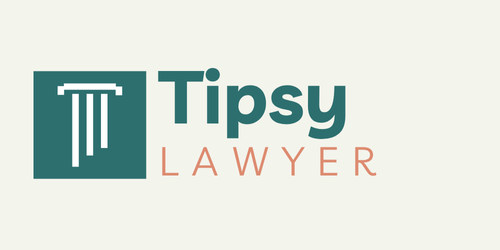Labor and employment law refers to the legal framework that governs the relationship between employers and employees. It encompasses a wide range of issues, including hiring and firing practices, workplace safety, employee compensation, and protection against discrimination and harassment. Labor and employment law is crucial in ensuring fair treatment and protecting the rights of workers in the workplace.
The importance of labor and employment law cannot be overstated. It provides a set of rules and regulations that employers must follow to ensure that their employees are treated fairly and equitably. It also serves as a safeguard against exploitation and discrimination, ensuring that workers are not subjected to unfair practices or unsafe working conditions. Labor and employment law plays a vital role in promoting social justice and maintaining a harmonious relationship between employers and employees.
Key Takeaways
- Labor and employment law governs the relationship between employers and employees.
- Understanding the basics of labor and employment law is crucial for both employers and employees.
- Key labor and employment laws and regulations include the Fair Labor Standards Act, Title VII of the Civil Rights Act, and the Americans with Disabilities Act.
- Government agencies such as the Department of Labor and the Equal Employment Opportunity Commission play a significant role in enforcing labor and employment laws.
- Navigating employee rights and protections, managing workplace discrimination and harassment, and understanding wage and hour laws are essential for compliance with labor and employment law.
Understanding the Basics of Labor and Employment Law
1. Types of employment relationships: There are different types of employment relationships, including at-will employment and contract employment. At-will employment means that either the employer or the employee can terminate the employment relationship at any time, for any reason, as long as it is not illegal. Contract employment, on the other hand, involves a written agreement between the employer and employee that outlines the terms and conditions of their employment.
2. At-will employment: At-will employment is the most common type of employment relationship in the United States. It allows employers to terminate employees without cause or notice, as long as it is not discriminatory or in violation of any other labor laws. Similarly, employees can also leave their jobs without giving any reason or notice.
3. Contract employment: Contract employment involves a written agreement between the employer and employee that specifies the terms and conditions of their employment. This includes details such as job responsibilities, compensation, benefits, and duration of employment. Contract employment provides more job security for employees, as they can only be terminated if they breach the terms of the contract.
4. Employee classification: Employee classification refers to the categorization of workers as either employees or independent contractors. Employees are individuals who work for an employer and are subject to their control and direction. Independent contractors, on the other hand, are self-employed individuals who provide services to a client or company but are not considered employees. The classification of workers is important because it determines their rights and benefits under labor and employment law.
Key Labor and Employment Laws and Regulations
1. Fair Labor Standards Act (FLSA): The Fair Labor Standards Act is a federal law that establishes minimum wage, overtime pay, recordkeeping, and child labor standards for employees in the private sector and in federal, state, and local governments. It requires employers to pay their employees at least the federal minimum wage and overtime pay for hours worked over 40 in a workweek.
2. Americans with Disabilities Act (ADA): The Americans with Disabilities Act prohibits discrimination against individuals with disabilities in all areas of public life, including employment. It requires employers to provide reasonable accommodations to qualified individuals with disabilities, unless it would cause undue hardship to the employer.
3. Family and Medical Leave Act (FMLA): The Family and Medical Leave Act provides eligible employees with up to 12 weeks of unpaid leave for certain family and medical reasons. It allows employees to take time off to care for a newborn or newly adopted child, care for a seriously ill family member, or recover from their own serious health condition.
4. Title VII of the Civil Rights Act of 1964: Title VII of the Civil Rights Act prohibits discrimination based on race, color, religion, sex, or national origin in all aspects of employment. It prohibits employers from making employment decisions based on these protected characteristics and requires them to provide equal opportunities to all employees.
5. Occupational Safety and Health Act (OSHA): The Occupational Safety and Health Act is a federal law that sets forth standards for workplace safety and health. It requires employers to provide a safe and healthy work environment, free from recognized hazards, and to comply with specific regulations to protect their employees.
The Role of Government Agencies in Labor and Employment Law
| Government Agency | Role in Labor and Employment Law |
|---|---|
| Department of Labor | Enforces federal labor laws, including minimum wage, overtime pay, workplace safety, and family and medical leave |
| Equal Employment Opportunity Commission | Investigates and resolves complaints of workplace discrimination based on race, color, religion, sex, national origin, age, and disability |
| National Labor Relations Board | Protects employees’ rights to form and join unions, and investigates and remedies unfair labor practices by employers and unions |
| Occupational Safety and Health Administration | Ensures safe and healthy working conditions by setting and enforcing standards, providing training and education, and conducting inspections |
| Department of Justice | Enforces federal laws prohibiting employment discrimination, including Title VII of the Civil Rights Act and the Americans with Disabilities Act |
1. Department of Labor (DOL): The Department of Labor is the federal agency responsible for enforcing labor and employment laws. It administers and enforces laws related to wages, working conditions, occupational safety and health, and employee benefits. The DOL also provides resources and guidance to employers and employees to help them understand their rights and responsibilities under labor and employment law.
2. Equal Employment Opportunity Commission (EEOC): The Equal Employment Opportunity Commission is the federal agency responsible for enforcing federal laws that prohibit employment discrimination. It investigates complaints of discrimination filed by employees against their employers and takes appropriate action to remedy any violations of the law.
3. National Labor Relations Board (NLRB): The National Labor Relations Board is an independent federal agency that protects the rights of employees to engage in collective bargaining and other concerted activities for the purpose of mutual aid or protection. It investigates unfair labor practices committed by employers or labor unions and takes appropriate action to remedy any violations.
4. Occupational Safety and Health Administration (OSHA): The Occupational Safety and Health Administration is a federal agency that enforces workplace safety and health regulations. It conducts inspections of workplaces, investigates complaints of unsafe working conditions, and takes appropriate action to ensure compliance with OSHA standards.
Navigating Employee Rights and Protections
1. Employee privacy rights: Employees have certain privacy rights in the workplace, including the right to keep personal information confidential and the right to be free from unreasonable searches and surveillance. However, employers also have the right to monitor employee activities to ensure productivity, prevent misconduct, and protect company assets.
2. Whistleblower protections: Whistleblower protections are laws that protect employees who report illegal or unethical activities in the workplace. These laws prohibit employers from retaliating against employees who report wrongdoing, and provide remedies for employees who have been retaliated against.
3. Retaliation protections: Retaliation protections prohibit employers from taking adverse actions against employees who engage in protected activities, such as filing a complaint or participating in an investigation. These protections ensure that employees can exercise their rights without fear of reprisal.
4. Right to work laws: Right to work laws are state laws that prohibit employers from requiring employees to join or pay dues to a labor union as a condition of employment. These laws are intended to protect the rights of employees who do not wish to join a union or support its activities.
Managing Workplace Discrimination and Harassment

1. Types of workplace discrimination: Workplace discrimination can take many forms, including discrimination based on race, color, religion, sex, national origin, age, disability, or genetic information. It can occur in various aspects of employment, such as hiring, firing, promotions, pay, and job assignments.
2. Sexual harassment in the workplace: Sexual harassment is a form of workplace discrimination that involves unwelcome sexual advances, requests for sexual favors, or other verbal or physical conduct of a sexual nature. It creates a hostile work environment and can have serious consequences for both the victim and the employer.
3. Preventing workplace discrimination and harassment: Employers can prevent workplace discrimination and harassment by implementing policies and procedures that promote equal opportunity and respect in the workplace. This includes providing training to employees on their rights and responsibilities, establishing a complaint process for reporting discrimination and harassment, and taking prompt and appropriate action to address any complaints.
Hiring and Firing: Best Practices in Labor and Employment Law
1. Pre-employment screening: Pre-employment screening is the process of gathering information about job applicants to determine their suitability for employment. It may include background checks, reference checks, drug testing, and other assessments. Employers must ensure that their pre-employment screening practices comply with applicable laws and regulations.
2. Employment contracts: Employment contracts are written agreements between employers and employees that outline the terms and conditions of their employment. They can provide job security for employees and protect the rights of both parties. Employers should ensure that their employment contracts are clear, enforceable, and comply with applicable laws.
3. Termination procedures: Termination procedures refer to the process of ending an employment relationship. Employers must follow proper procedures when terminating employees to avoid claims of wrongful termination or discrimination. This includes providing notice or severance pay, conducting exit interviews, and documenting the reasons for termination.
4. Severance agreements: Severance agreements are contracts between employers and employees that provide additional compensation or benefits to employees who are terminated. They typically require employees to waive their rights to sue the employer in exchange for the additional compensation or benefits. Employers should ensure that their severance agreements comply with applicable laws and are fair and reasonable.
Wage and Hour Laws: Understanding Employee Compensation
1. Minimum wage laws: Minimum wage laws set forth the minimum hourly rate that employers must pay their employees. The federal minimum wage is currently $7.25 per hour, but many states have higher minimum wage rates. Employers must ensure that they pay their employees at least the applicable minimum wage rate.
2. Overtime pay: Overtime pay is additional compensation that employers must provide to non-exempt employees for hours worked over 40 in a workweek. The overtime rate is typically one and a half times the employee’s regular rate of pay. Employers must accurately calculate and pay overtime wages to eligible employees.
3. Exempt vs. non-exempt employees: Exempt employees are not entitled to overtime pay because they are exempt from the overtime provisions of the Fair Labor Standards Act. Non-exempt employees, on the other hand, are entitled to overtime pay. The classification of employees as exempt or non-exempt is based on their job duties and salary level.
4. Pay equity laws: Pay equity laws prohibit employers from paying employees different wages based on their sex, race, color, religion, national origin, age, or disability. They require employers to provide equal pay for equal work, regardless of protected characteristics. Employers must ensure that their compensation practices comply with pay equity laws.
Workplace Safety and Health: Compliance and Liability
1. Employer responsibilities for workplace safety: Employers have a legal obligation to provide a safe and healthy work environment for their employees. This includes identifying and addressing workplace hazards, providing appropriate training and protective equipment, and implementing safety policies and procedures.
2. OSHA regulations and compliance: OSHA regulations set forth specific standards for workplace safety and health. Employers must comply with these regulations to ensure the safety of their employees. OSHA conducts inspections of workplaces to ensure compliance and can issue citations and penalties for violations.
3. Workers’ compensation insurance: Workers’ compensation insurance provides benefits to employees who are injured or become ill as a result of their employment. It covers medical expenses, lost wages, and other related costs. Employers are required to carry workers’ compensation insurance to protect their employees and themselves from liability.
Resolving Labor and Employment Disputes: Mediation, Arbitration, and Litigation
1. Alternative dispute resolution methods: Alternative dispute resolution methods, such as mediation and arbitration, are often used to resolve labor and employment disputes outside of the courtroom. These methods can be less costly and time-consuming than litigation and can help parties reach a mutually acceptable resolution.
2. Litigation in labor and employment law: Litigation is the process of resolving disputes through the court system. It involves filing a lawsuit, conducting discovery, presenting evidence at trial, and obtaining a judgment. Litigation can be a lengthy and expensive process, but it may be necessary in certain cases to protect the rights of the parties involved.
3. Importance of legal representation in labor and employment disputes: Labor and employment disputes can be complex and involve intricate legal issues. It is important for employers and employees to seek legal representation to navigate the legal process and protect their rights. An experienced labor and employment attorney can provide guidance, advocate for their clients’ interests, and help them achieve a favorable outcome.
In conclusion, labor and employment law is a complex and ever-changing field that requires employers to stay up-to-date on the latest regulations and best practices. By understanding the basics of labor and employment law, navigating employee rights and protections, managing workplace discrimination and harassment, and complying with wage and hour laws and workplace safety regulations, employers can create a safe and fair workplace for their employees while avoiding costly legal disputes. It is essential for employers to prioritize compliance with labor and employment laws to ensure the well-being of their employees and the success of their business.
If you’re interested in labor and employment law, you may also find our article on entertainment law intriguing. In this piece, we explore the legal aspects of the entertainment industry, including contracts, intellectual property rights, and labor issues specific to actors, musicians, and other creative professionals. Discover how entertainment law intersects with labor and employment regulations by reading our article on entertainment law.
FAQs
What is labor and employment law?
Labor and employment law refers to the legal framework that governs the relationship between employers and employees. It covers a wide range of issues, including hiring and firing, wages and benefits, workplace safety, discrimination, and workers’ rights.
What are the main sources of labor and employment law?
The main sources of labor and employment law include federal and state statutes, regulations, and court decisions. Some of the most important federal laws include the Fair Labor Standards Act, the National Labor Relations Act, and Title VII of the Civil Rights Act.
What is the purpose of labor and employment law?
The purpose of labor and employment law is to protect the rights of workers and ensure that employers comply with certain standards and regulations. It aims to prevent discrimination, promote workplace safety, and ensure that workers are fairly compensated for their labor.
What are some common issues that arise in labor and employment law?
Some common issues that arise in labor and employment law include wage and hour disputes, discrimination and harassment claims, wrongful termination, and workplace safety violations. These issues can be complex and require the expertise of a labor and employment lawyer.
What are the consequences of violating labor and employment law?
The consequences of violating labor and employment law can be severe. Employers may face fines, penalties, and legal action from employees or government agencies. They may also suffer damage to their reputation and lose business as a result of negative publicity.














